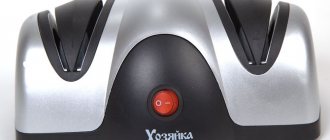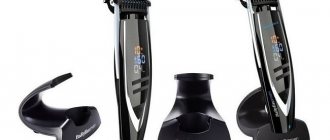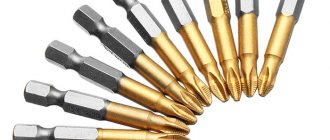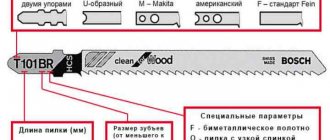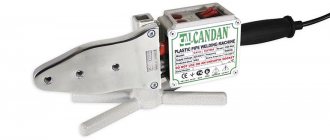What a multitool can do
Here are some MFI opportunities:
- cable channels are being installed for them;
- cut installed sewer pipes and internal wall reinforcement;
- remove deposits of plaster, glue, polyurethane foam, and clean off paint;
- peel off linoleum from the floor;
- file nails and screws flush;
- remove grooves in wood and drywall from the end and mortise (submersible);
- cut sheet elastic materials and soft seals;
- trim skirting boards, fillets and cornices in place;
- unstitch the seams on the laid tiles and cut the tiles themselves;
- trim installed door frames;
- grind complex surfaces and hard-to-reach internal corners;
- sharpen tools.
Let us now clarify what a renovator is. Professionals give it the following definition: a tool of last resort. It is indispensable as an auxiliary construction tool at the final stages of work or during remodeling. And when used at home, a multitool will completely save you from buying several power tools.
Rating of the best renovators
| Photo | Name | Rating | Price | |||
| Top 8 network devices | ||||||
| #1 | BOSCH GOP 55-36 L-BOXX | ⭐ 99 / 1001 – voice | Find out the price | |||
| #2 | Metabo MT 400 QUICK METALOC | ⭐ 98 / 10010 — votes | Find out the price | |||
| #3 | BOSCH GOP 30-28 | ⭐ 98 / 100 | Find out the price | |||
| #4 | DeWALT DWE315 | ⭐ 97 / 1005 — votes | Find out the price | |||
| #5 | Makita TM3000C | ⭐ 96 / 10011 — votes | Find out the price | |||
| #6 | BLACK+DECKER MT300KA | ⭐ 95 / 1005 — votes | Find out the price | |||
| #7 | Kolner KMT 300VN | ⭐ 92 / 1001 - voice | Find out the price | |||
| #8 | BOSCH PMF 220 CE | ⭐ 91 / 1004 — votes | Find out the price | |||
| TOP 7 battery renovators | ||||||
| #1 | AEG OMNI 18C LI-202B 2.0Ah | ⭐ 100 / 1009 — votes | Find out the price | |||
| #2 | Metabo MT 18 LTX Compact 2.0Ah | ⭐ 98 / 1002 — votes | Find out the price | |||
| #3 | BOSCH GOP 18V-28 | ⭐ 96 / 1003 — votes | Find out the price | |||
| #4 | DeWALT DCS355N | ⭐ 95 / 1006 — votes | Find out the price | |||
| #5 | Makita DTM51Z | ⭐ 94 / 1003 — votes | Find out the price | |||
| #6 | BOSCH UniversalMulti12 | ⭐ 92 / 1005 — votes | Find out the price | |||
| #7 | RYOBI R18MT-0 | ⭐ 91 / 1006 — votes | Find out the price | |||
Which renovator would you choose or recommend?
Take the survey
Types of MFIs and device features
By class, renovators are divided into professional and household. Expensive models have the ability to connect to a vacuum cleaner and have a flashlight that illuminates the work area. Professional power tools allow you to do more work in one go and last longer.
Based on the type of power supply, power tools are divided into mains-powered and battery-powered. One of the advantages of a multitool is its light weight and small size. The battery, unfortunately, increases both. The reduced engine power of battery-powered cutters has virtually no effect on their functionality.
Renovators operating from the network consume from 170 to 600 watts. For battery-powered models, the power is determined by the battery voltage. Low-power models up to 100 W are used for cutting soft and non-viscous materials. To work with metals and ceramics, models from 200 W are needed. At home, it is enough to purchase a medium-power tool - up to 250 W or up to 18 W for battery-powered devices.
The oscillation frequency range at idle varies from 5000 to 22000 kol/min. There are instruments with a fixed frequency and those with a smoothly or stepwise adjustable frequency. Metal, ceramics and elastic materials are processed at low frequencies, and wood, plasterboard or plastic – at medium and high frequencies. It is important that the tool has a soft start - this will allow you to start cutting without errors.
A multi-tool allows you to quickly move from one type of work to another. For this, the type of fastening is important - quick-clamping or key. With a quick release, the attachment is instantly locked in place, and with a key release, it is tightened with a hex bolt. It is also worth paying attention to whether it is possible to use attachments from other manufacturers, with or without an adapter, or not. For some models, you can change the angle of attachment of the files if you have to work in hard-to-reach places.
How to choose
The purchase of this tool should be treated with special attention. When choosing a renovator for your home, you should not be guided by the advice of friends or the appearance of the device. It is better to pay attention to the main characteristics of the device:
- Power. You should rely on this indicator first of all when purchasing. Power directly affects the efficiency of the tool when interacting with various surfaces (hard wood, concrete, metals). If the tool is planned to be used for processing soft material, then a power of 150-200 W will be sufficient. If you need it to work with hard surfaces, then choose the option with 250-300 W.
- Oscillation frequency. This characteristic affects the speed of work and the accuracy of the result. As a minimum indicator, renovators usually make 6 thousand vibrations per minute. The maximum value reaches 34 thousand vibrations. Most often, devices with an oscillation frequency of 20-22 thousand per minute are purchased for household use.
- Speed regulator. This function is present on most modern instrument models. Some of them are additionally equipped with a power button, the operation of which depends on the force of pressing. The tighter the button is pressed into the renovator body, the greater the number of its vibrations. This feature helps you process materials with different surface densities more efficiently. For example, maximum operating speed is useful for sawing wood. It is recommended to cut plastic at medium speeds, but for metal surfaces it is better to set this indicator to the minimum level. When purchasing, be sure to pay attention to the presence of an adjustable button.
- Maintaining constant speed. If heavy loads occur during operation of the tool, this leads to the mechanism stopping or slowing down. This function allows you to maintain the required speed even when working in difficult areas. To ensure a constant oscillation speed, constant electronics are built into the renovator. It will be especially useful if you plan to actively work with a wooden surface.
- Attaching the nozzle. For the renovator, two types of fasteners can be purchased. The first of them involves fixing the nozzle manually using a key, and the second involves using a special quick-release device. When purchasing, you can safely choose a model with the first type of fastening, if you do not expect frequent changes of attachments. The quick-release device is useful only in case of active work with constant switching of attachments.
- Features of the groove. Many manufacturers make attachments for their tools with different types of fastening. As a result, some of them may not be suitable for other brands of renovators. Bosh recently proposed using the same OIS mounts on all tools. It is better to choose this option when purchasing if you are afraid that the nozzle will not fit. In addition, the system allows you to use the tool at different angles of the blade.
- Battery powered. Renovators are battery-powered, which makes them more mobile and independent of external factors. Stores sell tools with two types of batteries: compact (easily fits into the handle of the device) and standard (more powerful and heavier). Small batteries run out quickly due to their small capacity, but they weigh very little, so they are more convenient to use. Their power is unlikely to allow them to work effectively with concrete or metal. Large models have twice the weight (together with the tool it weighs about 2 kg), but they can easily cope with heavy work. The choice should be made based on the purpose of the tool.
- Additional equipment. The efficiency of the device also depends on the ease of use of the device. Often, the renovator comes with an additional handle for the second hand. Manufacturers also offer a built-in flashlight for working in the dark and a nozzle immersion limiter. It is especially useful during wood processing. For ease of transportation, the models are supplied with a small plastic case or light bag. These characteristics are secondary, but can make tasks easier.
Often the buyer is faced with the question of which country of origin to choose. It is impossible to answer this unequivocally, because the service life depends on the correct use of the tool and the frequency of its use. Some craftsmen praise Chinese models for their affordability and long service life, while others criticize popular foreign manufacturers for the rapid breakdown of equipment.
Important! Whatever model the buyer chooses, when using it, you should always follow the safety rules. Failure to follow basic recommendations can result in equipment failure and serious injury.
Renovator is a universal tool that will help with a huge number of tasks during construction. When purchasing it, it is better to contact a consultant who will help you choose a tool with the best characteristics at an affordable price. It is best to buy a renovator from an official dealer, this will allow you to get a guarantee. When purchasing a tool on the secondary market, there is a high chance of stumbling upon a fake.
Read also: How to cut tiles
Most people have probably seen advertisements for this wonderful tool . On the Internet and on TV, home repair experts convince us that a device can replace a large number of tools, and without it, supposedly, our skills will simply be useless. Let's take a closer look at whether we need it, which renovator is better to buy, and how those who have already purchased this miracle of technology respond to it.
Consumables and components
MFIs are optionally equipped with cases for tools and accessories. Systems for connecting a vacuum cleaner, cut-in depth limiters, protective linings against touching the canvas, and adapters for using attachments from different manufacturers are sold separately. Multi-tools also sometimes provide for the installation of an additional handle, like on a drill.
The battery and charger are not a mandatory part of the package, and if you purchase them separately, you need to make sure that they match the voltage.
Consumables for renovators include polishing attachments, knives and files for scraping and cutting. There are different types of attachments for different tasks and materials:
- triangular plates for self-adhesive sanding or polishing sheets with Velcro;
- carbide triangular soles and tongues for grinding and polishing;
- semicircular or triangular cutting attachments with diamond or carbide chips for sawing metal and gating concrete and tile adhesive;
- submersible blades with a width of 10 to 70 mm with teeth at the end for wood or metal;
- scrapers (scrapers) for scraping off glued linoleum or residues of “liquid nails”, silicone and polyurethane foam;
- knives with a double-edged blade for gating walls or cutting carpet, linoleum, cardboard, polystyrene foam, fiberglass;
- attachments for attaching narrow cutting flat and spiral blades and threads, as in manual jigsaws.
Examples of using attachments
Most often, the renovator is used for sawing, cutting, grinding and removing excess parts of the dried mixture. For maximum efficiency, it is worth using separate attachments for each type of work: metal, concrete, wood, etc. The accessories that apply to each type are described below.
Wood cutting
If you use a renovator for sawing, the boards will turn out smooth, even, without any small notches.
If the total amount of work is modest, then MFI can also be successfully used for sawing, trimming or making holes in the material.
Attachments that are designed to work with wood are also perfect for linoleum, drywall or plastic.
Sanding and polishing
If it is necessary to treat a surface of modest size, then the renovator will ideally cope with this task. It can also be used to remove layers of dried paint, polish car body or wood surfaces. The grinding attachments are made in the shape of a triangle, with a special abrasive layer glued on top of them. Also, the sanding attachment may have small slots to better remove debris while using the vacuum cleaner.
Removal of mortars
Renovator can also be successfully used when removing parts of dried mixtures instead of a chisel or spatula. This is possible thanks to its vibration function. Using a special concrete nozzle in the shape of a semicircle, you can quickly clean the seams between the tiles. A smaller putty knife is used to cut pieces of linoleum or remove some putty from walls. Of course, if it is necessary to perform a large amount of work (for example, to process an entire wall), then a renovator is not suitable. It is better to use it in hard-to-reach places or in particularly problematic areas.
Read also: Light bulbs in a circle in a suspended ceiling
Metal cutting
It is convenient to cut metal products with a renovator using special nozzles made of high-speed steel. They will help when cutting nails or screws, sawing off pipes, as well as when cutting out small parts of the car body. The use of steel attachments for wood, plastic or drywall is also permitted.
What's unique about the universal cutter?
If you remember that renovators are not intended to perform a large volume of work, then it is difficult to find negative characteristics among them.
Renovators produce cuts with smooth, polished edges. The multi-tool is indispensable for cutting “sandwiches” from materials of different densities.
There is very little dust when working with the multitool, and it does not fly in all directions. And with an attached vacuum cleaner, you can do minor repairs at home without preparing the room.
The first renovators used it to remove plaster in traumatology. It is difficult to get hurt with the tool. And there are no fragments that fly apart like shrapnel when the canvas is damaged.
Reviews of renovators from different manufacturers
Many reviews about renovators are very negative. A considerable number of users write about its unreliability and fairly frequent breakdowns . They also write that attachments often break, and their acquisition is problematic. Most likely, these negative opinions are associated with a large number of fakes.
If you buy a good and high-quality renovator, then it will cope with its responsibilities 100%. After all, we must take into account that the mechanism of the tool is not designed for long-term work; it cannot cut through cubes of forest. Positive reviews are written by people who bought professional models. The rating of renovators Bosch, Makita and Aeg can be seen in the video.
Read also: Connection diagram for trailer socket of VAZ car
Relatively little time has passed since the multitool became widespread. One decade of mass sales was not enough to firmly take root in the minds of the current generation of builders. Many experienced craftsmen have not yet heard of this device, or at least have not used it personally. In this article we want to dispel all possible ambiguities, talk about the principle of operation of the renovator and show video examples of using this tool.
Buying Tips
The choice of a multi-tool depends little on its class and comes down to consumables and equipment. For your home, it is quite possible to buy a household appliance without a kit and select accessories for it only for the planned types of work. If you do not overload the equipment, it will serve no worse than professional ones. And consumables from top manufacturers are becoming practically immortal for home use.
The most popular professional tools and accessories are made by Bosch, Makita, DeWalt, Dremel and Fein. Among inexpensive brands, Renovator, Intertool, Enkor and Rhythm devices are popular. Knives and saws for the home should be chosen with the “BiM” marking as the most universal.
How to use the renovator
As you know, a multitool is a compact and easy-to-use tool, aimed more at household rather than professional use. It does not require the worker to have special knowledge or skills in its use. Perhaps the most important thing you need to understand before starting to use this device is its attachments. Sawing wood, cutting metal or sanding various surfaces will not pose serious problems even for novice craftsmen.
The pressure force and the angle of inclination of the nozzle depend on the power and speed of the individual tool and are not particularly important during operation. In a short time of using your multitool, you will determine the approximate cutting or grinding speed, and easily find the optimal way to process any material. To get a general idea of how a multi-tool works, watch a video of a renovator at work and simply repeat what you see.
Replacing the attachments of a multifunctional tool is done using a hex wrench or a special quick-clamping mechanism, the operating principle of which must be specified in the instructions for the device. The documentation also specifies the number of revolutions at all speeds if the renovator is equipped with a regulator. In general, the hero of this article is very simple, and the video will help you learn how to work as a renovator only at the initial stage of acquaintance. To effectively use a tool, there is nothing better than personal experience in handling it.
Vote; best renovator
Which renovator would you choose or recommend?
BOSCH GOP 55-36 L-BOXX
1.41% ( 1 )
Metabo MT 400 QUICK METALOC
14.08% ( 10 )
BOSCH GOP 30-28
0.00% ( 0 )
DeWALT DWE315
7.04% ( 5 )
Makita TM3000C
15.49% ( 11 )
BLACK+DECKER MT300KA
7.04% ( 5 )
Kolner KMT 300VN
1.41% ( 1 )
BOSCH PMF 220 CE
5.63% ( 4 )
AEG OMNI 18C LI-202B 2.0Ah
12.68% ( 9 )
Metabo MT 18 LTX Compact 2.0Ah
2.82% ( 2 )
BOSCH GOP 18V-28
4.23% ( 3 )
DeWALT DCS355N
8.45% ( 6 )
Makita DTM51Z
4.23% ( 3 )
BOSCH UniversalMulti12
7.04% ( 5 )
What can you do with the device?
Renovator appeared relatively recently, but immediately became popular. The list of work that can be carried out using such a device is quite wide:
- grinding the surfaces of any building materials;
- cleaning parts, joints, cut materials from smudges, build-ups, burrs;
- cutting grooves and recesses of various shapes in wooden products;
- drilling holes in concrete, brick, wood;
- cleaning tile joints and seams;
- cutting ceramic tiles, pipes (plastic and metal), baseboards, wooden products, laminate;
- peeling of floor and wall coverings, such as linoleum;
- cleaning surfaces from paint;
- wall gating;
- cutting nails and other fasteners or embedded products.
Many people believe that a power tool such as a renovator is purely household and can only be used for small-scale work. But practice has shown that this device is increasingly appearing in the arsenal of professionals. Especially those who are engaged in repair work, carpentry and installation.
Making a nozzle for a renovator with your own hands
The described method allows you to make an excellent, durable saw for wood and plastic; more about metal a little later.
1. We buy a high-quality woodworking hacksaw with a fine tooth in the store. As a rule, it has high quality steel and, most importantly, a wide blade, which allows us to fully restore the nozzle, including its length.
2. Mark the hacksaw blade along the width of the nozzle and cut it into blanks using a grinder. This saw will make 7 of them.
3. Cut off the working part from the original nozzle.
4. Mark and drill 2 mounting holes in it. First we use a 1.5 - 2 mm drill.
5. We release the back part of the blanks from the file, heating it with a gas burner until it glows crimson and allowing it to cool in the air.
6. We mark the holes, aligning them with the prepared part of the standard nozzle, and drill them, using drills sequentially: first, the same as when drilling the shank of the nozzle, and then with a diameter of 6 mm. Using the same drill, we enlarge the holes in the shank.
7. After drilling and marking, we bend the released part of our blanks to an angle slightly less than that of the standard tool. We connect both parts using short M6 bolts - the angle will be leveled.
Such an attachment will serve you for a long time no worse than a standard one from a good manufacturer; it will cost at least 5–6 times less, taking into account the cost of a hacksaw and 6 spare working surfaces. And it will do its job just as well as a purchased one, or even better.
Yes, do not forget about the possibility of repeated sharpening, which is provided by the manufacturer of the hacksaw that served as the donor of the blades.
Lastly. For metal, you can also take a good hacksaw blade, cut it into pieces and carefully weld it to the base, removing the worn part. Here it is important to weld the blade with teeth efficiently and without overheating and carefully process the thickness of the seam.
We recommend other articles on the topic
